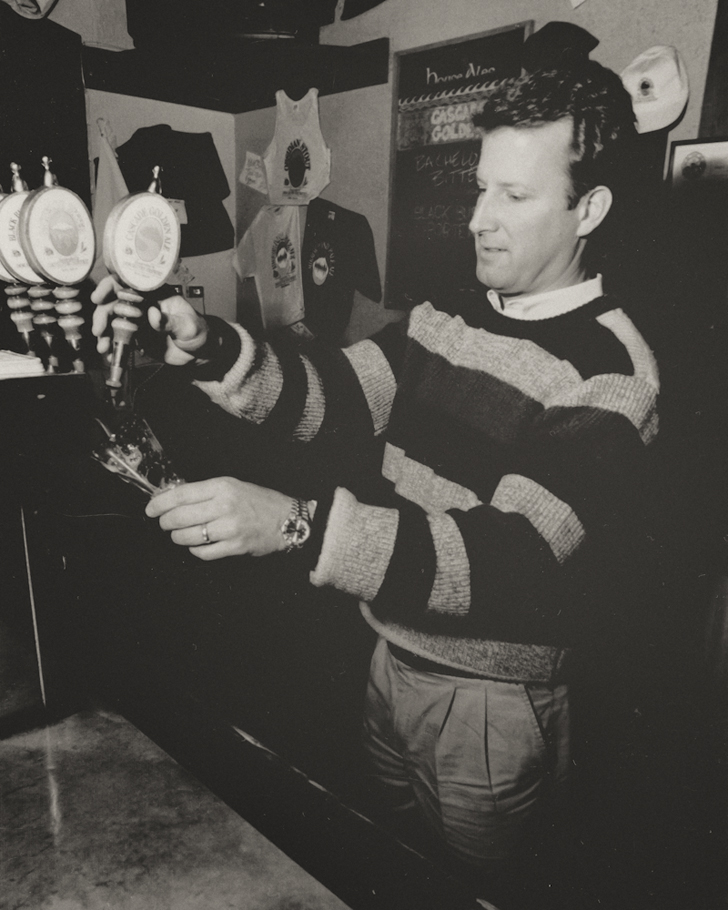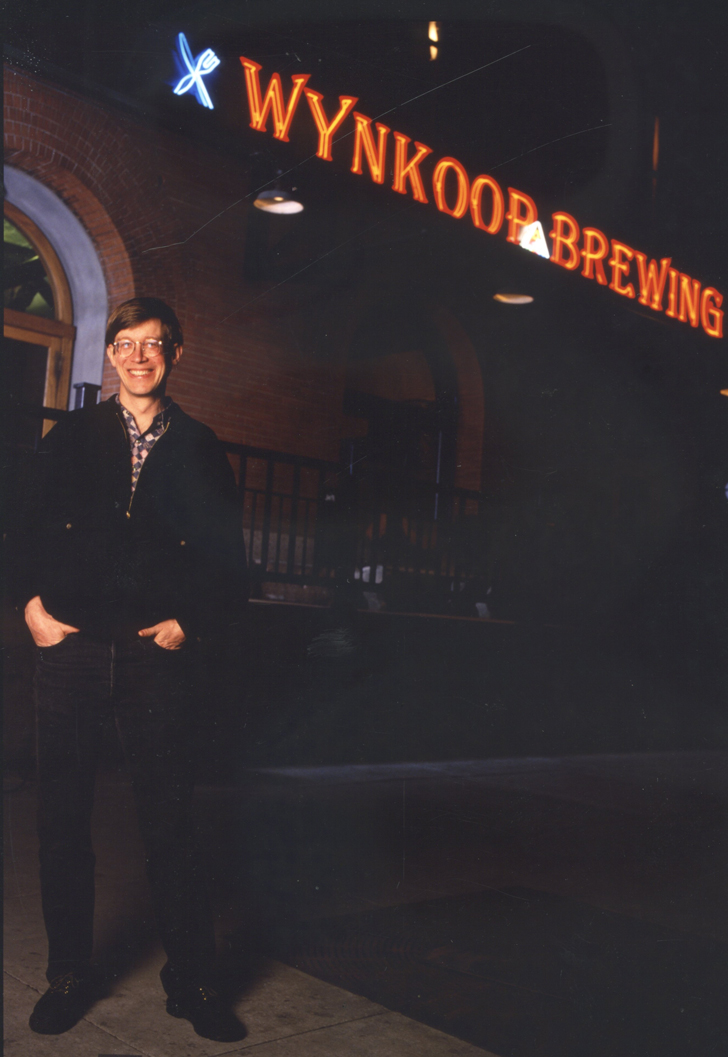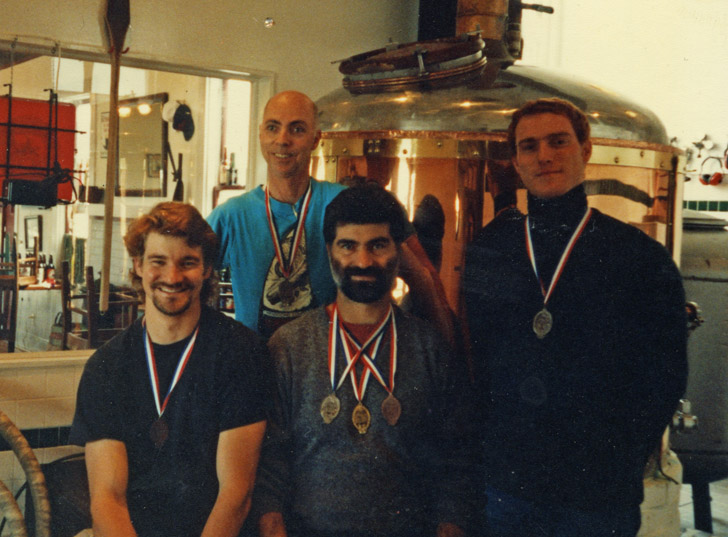The Class of ’88
Looking Back at a Quarter Century of Business, Beer and People
Fifty-six American breweries began operating in 1988. By necessity, 55 of them started small. That they all started 25 years ago was mostly coincidence. Noteworthy breweries opened in pretty much every one of the years before and after. But ultimately, as Goose Island Beer Co. founder John Hall put it, “It was a special year.”
One story about the 56th brewery that opened that year reveals how different the beer landscape was then. Anheuser-Busch announced it would build its 12th brewery in Fort Collins, CO, three years before it opened the $300 million plant in 1988. Plans called for a corporate tasting room that would face farmland to the east. That changed when company president August Busch III got a look at the blueprints. “He decided when he’s here tasting beer, he very much wanted to see the mountains,” said brewery manager Jack Carmichael. The tasting room was moved from a second-floor office to a room atop the building facing the Rocky Mountains.
Greg Noonan didn’t have that kind of money to start Vermont Pub & Brewery in Burlington. “It was mostly found items,” he said 10 years later, ticking off curious parts like a maple sap boiler, an ice cream maker, and a pig-lot feeder. Noonan’s was one of 44 brewpubs to open in 1988. Some, like his, remained small. Six of them grew into packaging breweries that ship their beer across the country and even around the world. Several others, again like Noonan’s, exerted outsize influence.
It was just the beginning for those breweries, of course. Now, a quarter-century later, drinkers across America have been treated to special 25th anniversary beers from the likes of Brooklyn Brewery, Rogue Ales, Deschutes Brewery, Great Lakes Brewing Co. and quite a few more.
Here now, All About Beer Magazine takes a look—often just a quick glance—at what happened to the class of 1988 in each of the years since. It turns out to be a story with equal parts business, beer and people.
1988
By the numbers: At the end of 1987 there were 73 breweries operating that opened after Fritz Maytag bought Anchor Brewing in 1965, plus Anchor itself. Forty-four of the 55 small breweries that began selling beer in 1988 were brewpubs, compared with only 29 brewpubs total operating when the year started. A few of the startups did not even make it to 1989; others lasted as long as 20 years before closing. The two dozen small breweries that remain in business 25 years later will brew more than a million barrels of beer in 2013, while the A-B plant in Fort Collins makes 10 million.
1989
Not long after Charlie and Ernie Otto founded Otto Brothers’ Brewing in western Wyoming, their father told them about growlers, the pails once used to haul beer home from taverns. Rather than use a similar open container to sell beer to go, Charlie added the brewery’s label to one-half gallon glass cider jugs, declaring it the first modern-day growler. Today liquor stores, grocery stores, even gas stations sell beer in glass-jug growlers. The Ottos moved the brewery to Idaho in 1998 and renamed it Grand Teton shortly after. Forgoing nostalgia, the brewery packaged its series of 25th anniversary beer in 750 mL bottles.
1990
Wynkoop Brewing co-founder John Hickenlooper displayed his gift for promotion from the outset. To celebrate its second anniversary, Wynkoop hosted the first “Running of the Pigs,” prodding piglets borrowed from a local farmer to race around the block. The Denver tradition ended after 10 years and ongoing complaints from People for the Ethical Treatment of Animals.
1991
Rogue Ales moved into its third brewery, and its original name—Rogue River Brewing Co.—no longer seemed appropriate. The brewpub in Ashland, OR, at the headwaters of the Rogue River, made 200 barrels in 1988, and co-founder Jack Joyce and his partners wanted to sell more. They opened a brewpub in Newport in 1989, then moved the brewery into a former marine repair shop across Yaquina Bay. Rogue closed its Ashland pub after a flood in 1997 (now Caldera Brewing operates a taphouse in the location), but still operates 12 in all.
1992
Brewmaster Mark Ruedrich and his partners discovered early on that they weren’t going to sell enough beer at a brewpub in an out-of-the-way town (North Coast Brewing in Fort Bragg, CA) to support themselves. Winning four medals at the 1992 Great American Beer Festival made Plan B, which included selling beer farther afield, easier to execute. They built a new brewery across the street from the original brewpub in 1994 with room to grow until production reached 50,000 barrels annually. That happened in 2012. So they figured out a way to make perhaps 90,000 barrels in the same space and began drawing plans for a new brewery, not at all sure if they’ll ever use them.
“A lot happens just by surviving. You have the opportunity to make good beer,” Ruedrich said. “Then you can try different things people haven’t done before.” That includes beers like Old Rasputin Imperial Stout and the Belgianesque PranQster that introduced drinkers, and often other brewers, to something different. Additionally, Brother Thelonious, first released in conjunction with the Thelonious Monk Institute of Jazz, took craft beers to places such as jazz clubs and music festivals where it previously was not available.
1993
An actual scene from the 12th Great American Beer Festival (GABF): A man collected a sample from Seabright Brewing, stepped back into a crowded aisle, took a drink, closing his eyes and smiling with obvious pleasure. A passerby in the aisle paused just long enough to comment, “Must be Seabright.” Seabright Brewing in Santa Cruz, CA, had won three medals the year before, and its Oatmeal Stout took gold in 1993. That beer has won five GABF medals itself, most recently in 2006. Seabright brewed about 1,000 barrels the year after it opened in 1988, and only six brewpubs in the country reported making more beer. Seabright brewed about 1,000 barrels in 2012, and 223 brewpubs made more.
Stan Hieronymus
Stan Hieronymus, a contributor to All About Beer Magazine for 20 years, is the author of several books on beer and brewing. The most recent, For the Love of Hops (Brewers Publications), deals with all aspects of one of beer’s essential ingredients.




looking to purchase class of 88 beers; can’t find them; living in northern new jersey.
Another fantastic, and fascinating, piece from Stan.